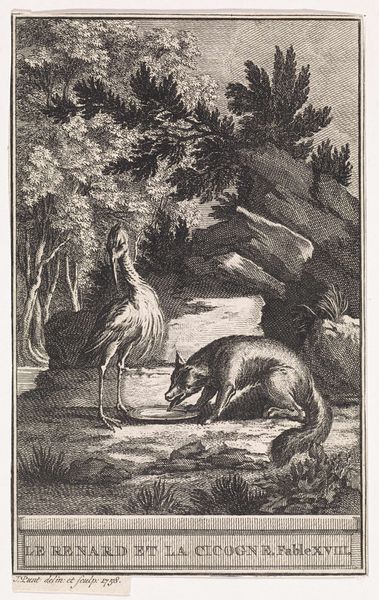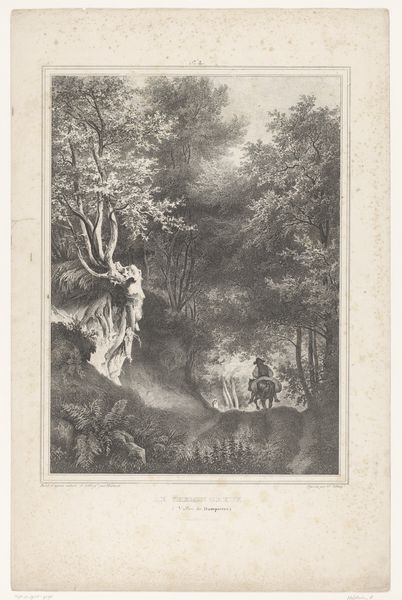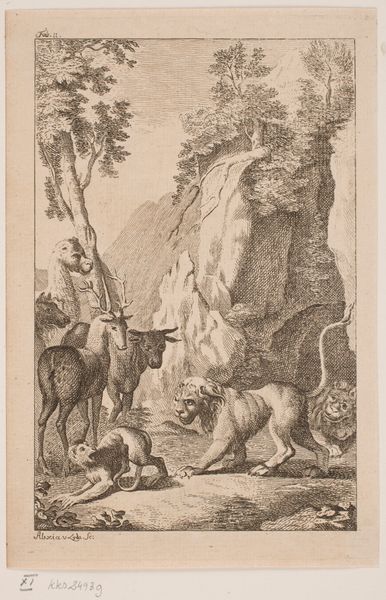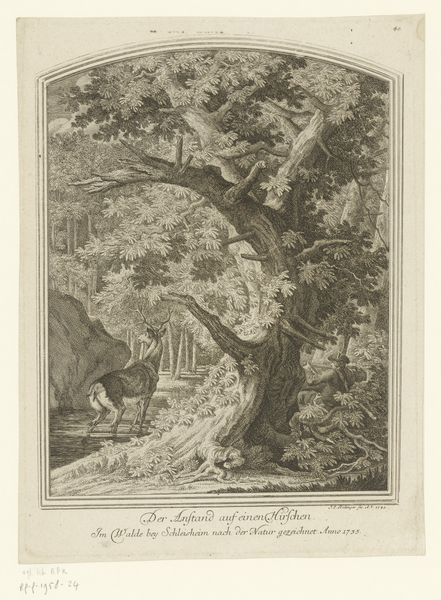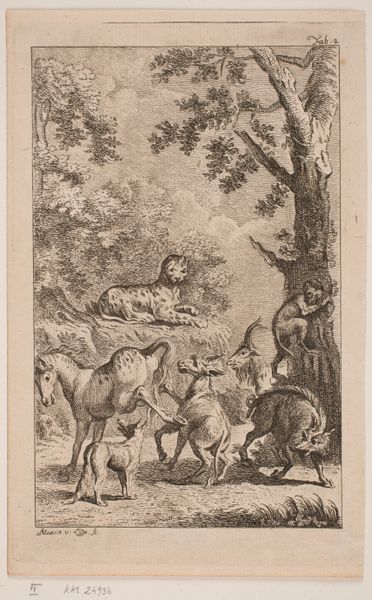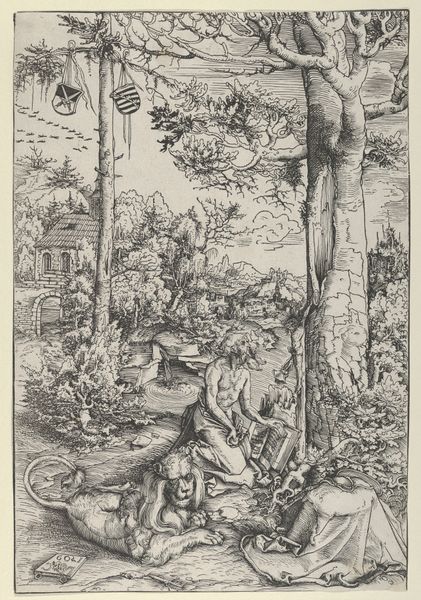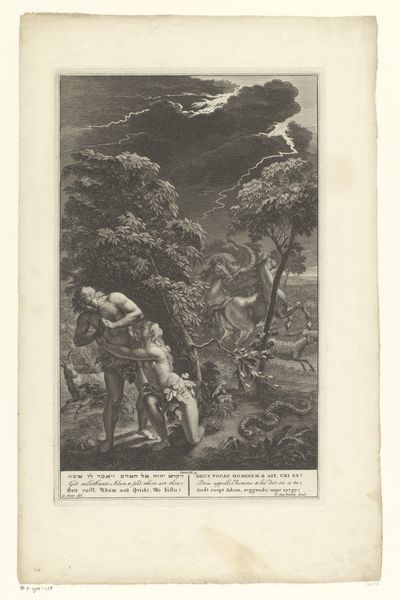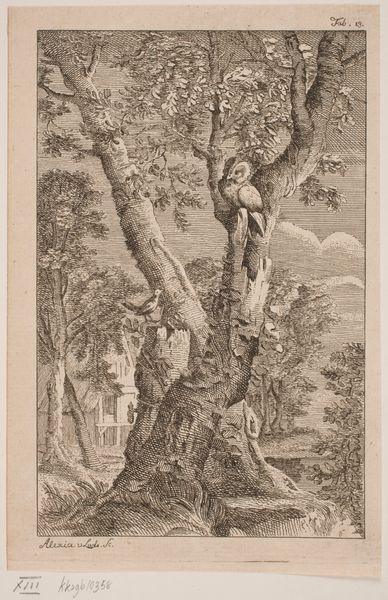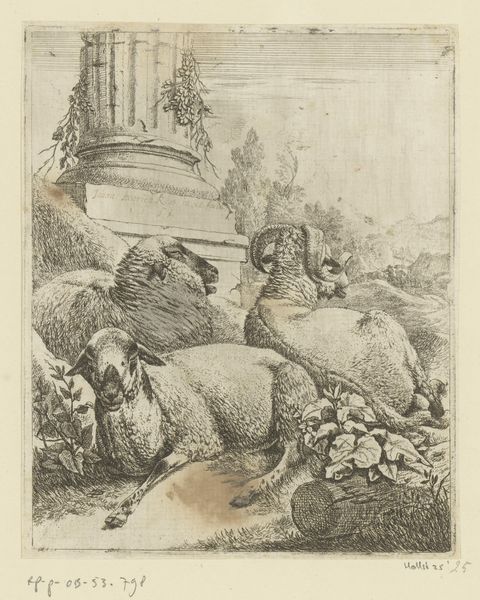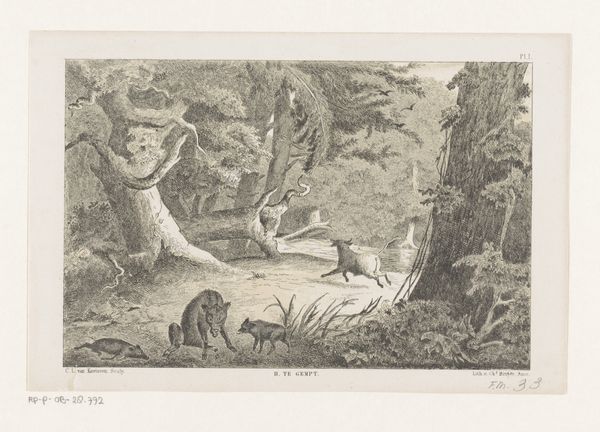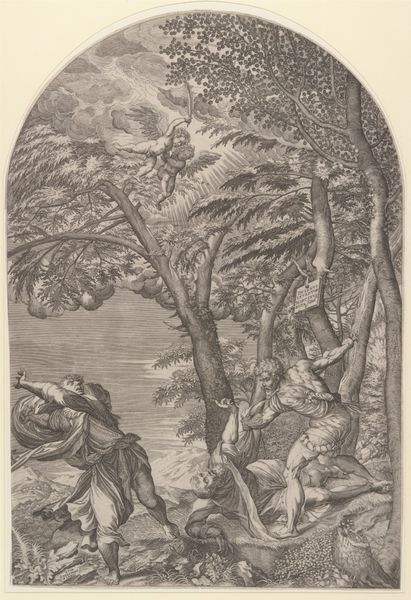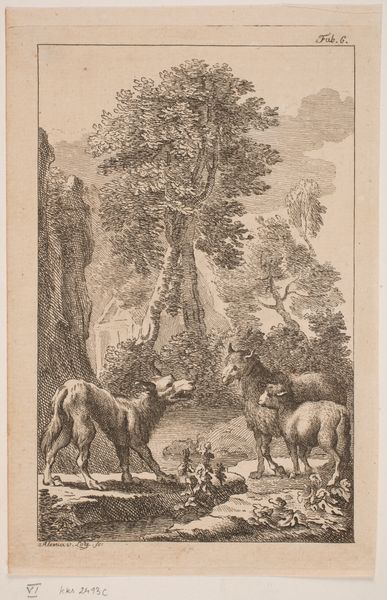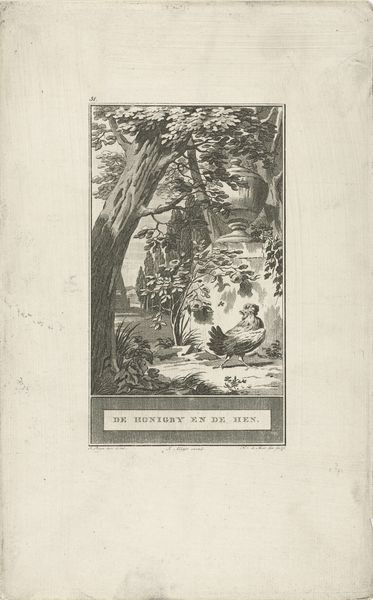
drawing, print, ink, engraving
#
drawing
#
ink drawing
#
animal
# print
#
landscape
#
etching
#
ink
#
folk-art
#
engraving
Dimensions: 200 mm (height) x 133 mm (width) (brutto)
Curator: It has this kind of hushed, storybook quality about it, doesn't it? So delicate. Editor: This is "Ørnen og en Forsamling af Fugle," dating back to 1760, housed right here at the SMK. It's a striking print by Alexia von Lode. The interplay of etching and engraving gives the lines such a crisp feel. Curator: It's that crispness that draws you in, almost against your will. It feels allegorical, you know? Like something from Aesop. Is that little structure in the background a dovecote? Editor: Potentially. The work certainly invokes folklore; von Lode had likely observed and participated in craft production influenced by a vibrant folk tradition, now mediated through a luxury market that appreciated small prints and drawings. The production techniques point to skilled labor being deployed in what's made for entertainment. Curator: I can't help but feel a sense of unease when I look at the central eagle. It's placed so deliberately amongst those other smaller birds. I mean, is it protecting them, or plotting something much more sinister? I feel like I'm supposed to find some deeper wisdom here, perhaps on the relationship between power and vulnerability. Editor: You’re spot-on to sense the tension! That central eagle and how von Lode renders its dominance likely has much to do with courtly spectacle and prevailing aristocratic culture from the period, not merely some naive fascination with the animal world. Look closely—those fine lines took training and skill, acquired presumably through patronage. Curator: It's all those hatched lines giving depth, volume, almost a tactile sense of texture. But you also lose clarity that creates some uncertainty in meaning, wouldn’t you say? And then it fades away at the edges with a wonderful sense of freedom. It makes me ponder the constraints under which creativity sometimes struggles... Editor: Indeed. In its own way, the work is subtly raising some questions of craft and labor. The work’s enduring presence invites reflections on class and its effect on representations of power, as much as anything else. Curator: Agreed, so wonderfully ambiguous, and deeply evocative about artistic intention in general, centuries after it was crafted! Editor: Absolutely. Thanks for joining me to consider it today.
Comments
No comments
Be the first to comment and join the conversation on the ultimate creative platform.
